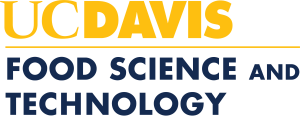A. Specific Learning Outcomes .At the end of this course students will be able to:
- Describe human sensory perceptions, particularly the chemical and trigeminal senses (taste, smell, chemesthesia, touch, kinesthesia), and their relevance to the evaluation of food and beverage sensory properties
- Demonstrate knowledge and understanding of sensory evaluation and consumer testing methods and of their underlying principles
- Design experiments to measure the sensory properties and consumer acceptance of foods, beverages and other consumer products
- Understand, select and apply basic univariate and multivariate statistical methods to the analysis of sensory and consumer data
- Research the scientific literature and other relevant media
- Integrate the necessary sensory and consumer testing steps into the quality assurance, product development and marketing processes following best practices
- Manage projects in a team environment
- Write reports and give oral presentations of results of sensory and consumer tests
How this course addresses IFT Core Competencies:
Junior- or senior-level course:
Taught in the winter quarter, and as one of two upper-division courses that can be used to meet the sensory evaluation requirement for food science majors at UC Davis, FST 127 is a 4-unit lecture and laboratory course in advanced sensory evaluation and consumer testing methods. FST 127 builds on the basic knowledge of statistics acquired in STA 13 and FST 117, and on the basic knowledge of food properties acquired in FST 100A&B. Through the hands-on laboratory and project focused portion of the course, FST 127 also develops some of the Success Skills required by IFT.
B. Tools used to assess program outcomes
Bloom’s levels I-IV
As a course that teaches advanced, upper-division material and requires students to build on the knowledge acquired in other courses as well as learn new methods and practices in a range of disciplines, assessment includes a midterm and a final examination as well as written reports and oral presentations which are often based on advanced statistical analyses and require some literature search. Exam questions cover both knowledge and application, and often ask students to critically assess hypothetical or actual practices in the field, and to design experiments or tests to answer a particular need. For example, students are expected to come up with a suitable combination of analytical sensory methods (difference or similarity tests, and/or descriptive analysis tests), consumer testing methods (preference tests, hedonic or just-right scales, focus groups and/or ethnography) and multivariate statistics (factor or classification methods) to support a new product development task.
C. Brief summary of assessment results to date
This Sensory Evaluation of Foods course was initially revised and repurposed 15 years ago, and it has been continuously updated since to incorporate new methods and new applications of sensory testing, to adapt to the changing needs and priorities of consumer product industries in the fields of sensory science and consumer research, and to place a greater focus on student learning outcomes. It continues to emphasize the importance of sound and relevant experimental designs and statistical analysis methods.
- Students provide detailed course and instructor evaluations at the completion of the course. This data is used to adjust lecture, laboratory, assessment and other activities as well as instruction delivery methods to maximize learning. For example, while we continue to engage students in extensive and sustained statistical analysis of sensory and consumer data, we have given them greater opportunities to explore actual industry practices through field trips and guest speakers and to practice team project management for some of their assignments. Lecture outlines and laboratory assignments are now made available online ahead of their coverage in the course.
- We have updated the slate of laboratory exercises and activities continuously in an effort to incorporate the latest methodologies that are developed in the fields of sensory science, consumer research and sensometrics.
